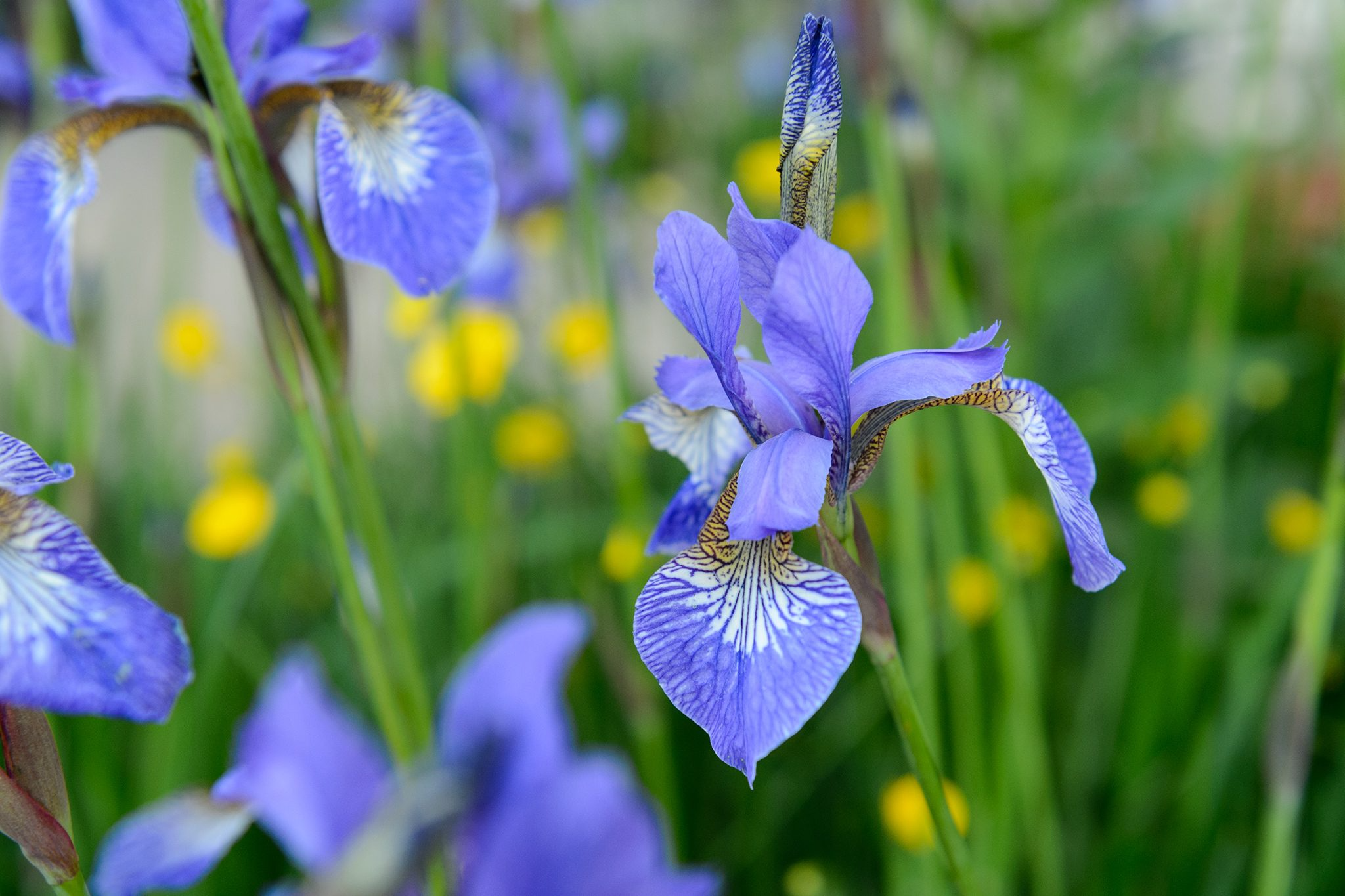Here's Why Your Irises Aren’t Blooming (And How to Fix It)
Iris Beds with No Flowers? Here’s Why
Despite their reputation for being low-maintenance and resilient, even well-established irises can suddenly stop producing flowers. Here on the New Hampshire Seacoast — from Rye to Hampton and Hampton Falls — we’re hearing from many gardeners whose iris beds are lush with foliage but mysteriously flower-free.
At Seacoast Gardener, we specialize in helping homeowners across the Seacoast troubleshoot common gardening issues like this. Here are the most common reasons why irises fail to bloom — and what you can do to bring those beautiful flowers back next season.
1. Your Irises Are Too Crowded
How to spot it: If your iris patch used to bloom beautifully but has slowed down over time, the problem might be overcrowding. When too many rhizomes compete for space, they stop focusing on flowers and shift to just surviving.
How to fix it: Divide your irises every 3–4 years to promote healthy blooms. The best time to divide iris rhizomes is in late summer, a few weeks after flowering.
Steps to divide irises:
Carefully dig up the entire clump.
Cut rhizomes apart using a clean, sharp knife.
Keep firm, younger sections and discard the old woody centers.
Replant with the top of the rhizome just visible above the soil surface.
2. Your Irises Are Planted Too Deeply
How to spot it: Can’t see the tops of your iris rhizomes? That’s a red flag. Irises need their “shoulders” exposed to sunlight and airflow.
How to fix it: Gently lift and replant your irises so the top of each rhizome sits just above or at soil level. Avoid heavy mulching over the rhizomes, it can smother them and prevent flowering.
3. Your Irises Aren’t Getting Enough Sun
Irises need full sun — at least 6 hours of direct light daily — to thrive and bloom. If they’re planted in a spot that’s become shady over time due to growing trees or nearby structures, flower production will suffer.
Fix: Consider relocating your irises to a sunnier area during the late summer, or prune nearby plants that may be blocking sunlight.
4. Watering Issues
Overwatering is one of the most common mistakes with iris care. Irises need well-drained soil and are especially prone to rot in soggy conditions.
Fix: Water deeply but infrequently. Make sure the soil drains well, and consider raised garden beds if you're working with heavy, clay-like soil.
5. Too Much Fertilizer
Fertilizer overload — especially with nitrogen-heavy blends — can promote lush green leaves at the expense of blooms.
Fix: Use a balanced, low-nitrogen fertilizer (such as 5-10-10) once or twice a year, ideally in early spring and just after blooming.
6. Pests and Diseases (Especially Soft Rot)
Soft rot is a bacterial disease that causes iris rhizomes to become mushy and foul-smelling. This issue thrives in overly wet conditions.
Fix:
Remove and discard affected rhizomes (don’t compost them).
Let healthy rhizomes dry out before replanting.
Improve air circulation and avoid excessive watering.
Keep an eye out for other pests too, like iris borers and slugs, which can damage foliage and prevent flowering.
7. Your Irises Are Too New to Bloom
If you just planted irises last year, don’t panic if they’re not blooming yet. Irises often take a full growing season to establish themselves before showing off their signature blooms.
Fix: Be patient! Focus on good placement, soil drainage, and correct planting depth, and you’ll likely see flowers next season.
Need Help Bringing Your Irises Back to Life?
If your iris flowers still aren't blooming after trying these steps, it may be time for expert help. At Seacoast Gardener, we work with homeowners across Rye, Hampton, Hampton Falls, and nearby towns to diagnose plant problems and restore vibrant, thriving landscapes. Contact us today for a free consultation — we offer local garden care services, customized plant support, and practical, eco-friendly solutions to bring your garden back to life.
📞 [+1 603-770-5072]
🌐 www.seacoastgardener.com
